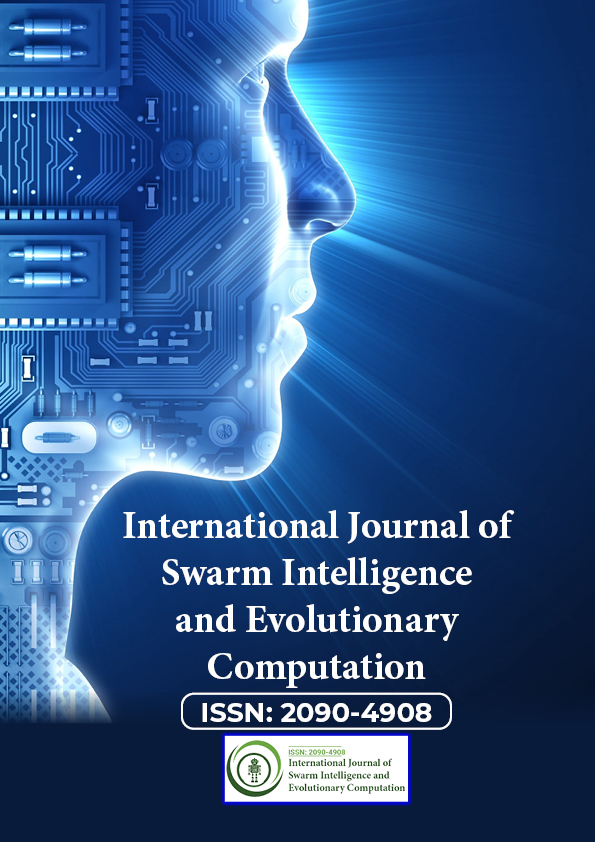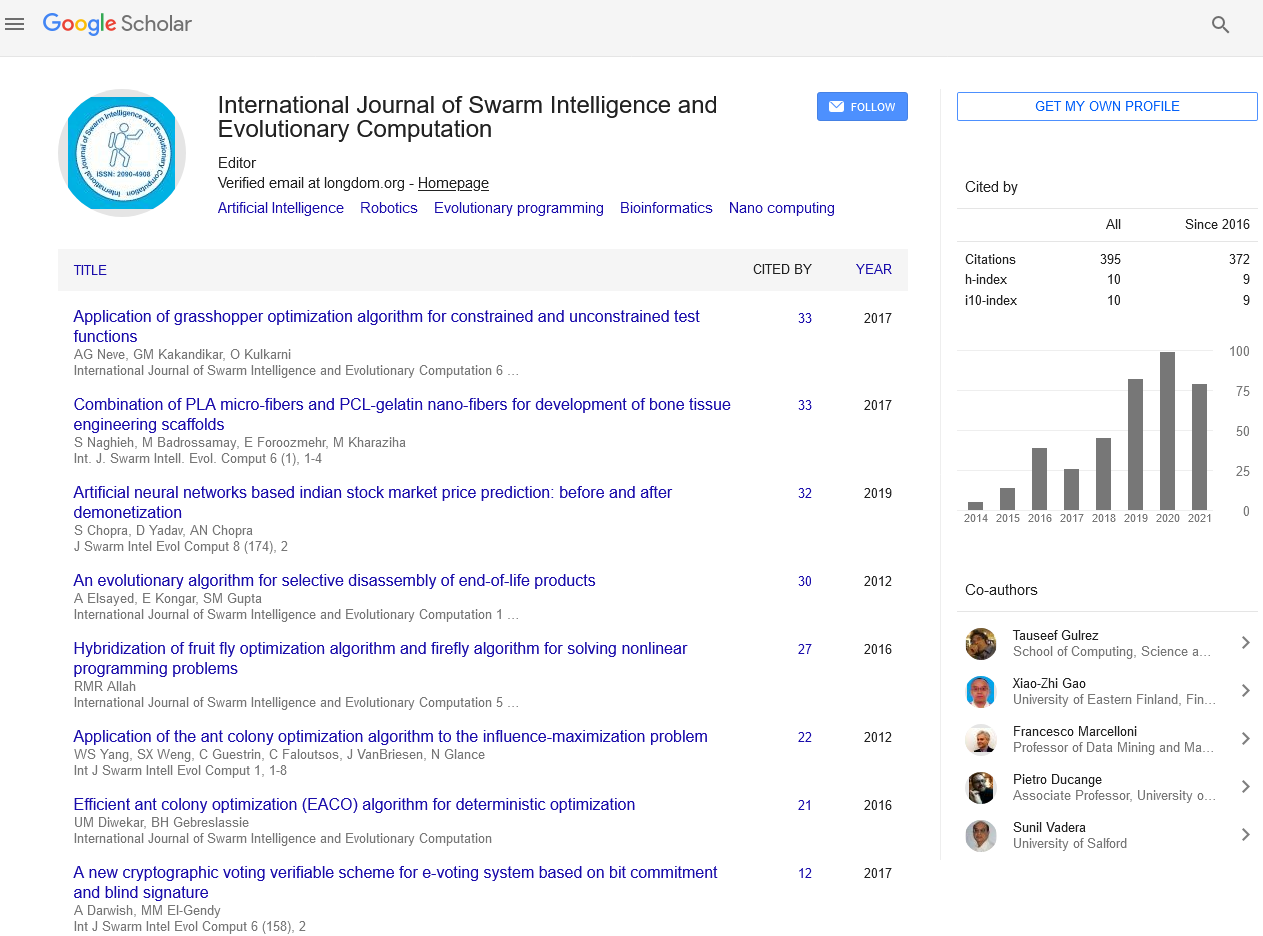Indexed In
- Genamics JournalSeek
- RefSeek
- Hamdard University
- EBSCO A-Z
- OCLC- WorldCat
- Publons
- Euro Pub
- Google Scholar
Useful Links
Share This Page
Journal Flyer

Open Access Journals
- Agri and Aquaculture
- Biochemistry
- Bioinformatics & Systems Biology
- Business & Management
- Chemistry
- Clinical Sciences
- Engineering
- Food & Nutrition
- General Science
- Genetics & Molecular Biology
- Immunology & Microbiology
- Medical Sciences
- Neuroscience & Psychology
- Nursing & Health Care
- Pharmaceutical Sciences
Perspective - (2023) Volume 12, Issue 1
Bio-Robotic Intelligence and its Applications
Harini Paul*Received: 21-Dec-2022, Manuscript No. SIEC-23-19867; Editor assigned: 23-Dec-2022, Pre QC No. SIEC-23-19867 (PQ); Reviewed: 07-Jan-2023, QC No. SIEC-23-19867; Revised: 16-Jan-2023, Manuscript No. SIEC-23-19867 (R); Published: 25-Jan-2023, DOI: 10.35248/2090-4908.23.12.294
Description
Biologically inspired robotics is referred to as bio-robotics. In order to develop new technologies, it is an interdisciplinary science that brings together the fields of robotics, biomedical engineering, and cybernetics. A combination of robotics and biology involving two technical fields is called bio-robotics. The first technical area is concerned with using biological concepts and phenomena to solve robotics engineering issues. Utilizing robotics technology to understand biological systems and their behaviors is the second technical area.
The study of biologically inspired engineering can be traced back to a few centuries ago, so the field of bio-robotics is not a recent development. One well-known instance is the creation of flying machines that are motivated by soaring birds. Since then, biorobotics has become one of the most popular subjects in the field of robotics, and much important advancement has been made. The term "bio-robotics" is frequently used to describe a legitimate branch of robotics that entails the study of and creation of biologically-inspired robots with advanced functionality. In order to create new technologies, it is a multidisciplinary science that combines the fields of robotics, biomedical engineering, and cybernetics. The study, development, and application of robots are the focus of the interdisciplinary field of robotics, which includes computer science, engineering, and technology. The goal is to learn about the various engineering specialties that make up robot technology. The goal of robotics is to create and develop machines that can help and assist humans in a variety of ways by mimicking human behavior and actions. Bio-robotics aims to create robots that are as agile as animals by modelling them after biological traits found in living things.
Applications
The world of biology has, however, had a significant influence on the most recent trends in robotics. People from all walks of life have been fascinated by robots for a long time, and they have made great strides in the fields of innovation and design. Because of this, various engineering problems have been solved using knowledge of the natural world. The development of biologically inspired robots has aided scientists and engineers in devising new strategies and techniques for building specialized robots. The development of numerous new treatments and external aids for a variety of healthcare-related problems has made extensive use of biologically based robots in the healthcare industry.
The adoption of various environment-based natural activities and their implementation through various means has allowed biologically based robots to advance considerably since their invention and to do so going forward. Industrial applications and even cutting-edge space missions are possible with bioinspired robots. This demonstrates how biology has an impact on the world of technology.
Industrial robots are generally used in the manufacturing sector to load and unload equipment for automated assembly, painting, welding, sheet metal manufacturing, laser cutting, machine tending, and other tasks. However, the robot's utility and adaptability are provided by the computer's brain. Today, robots are used for more than just manufacturing. Bio-robotics is the study of how robots can be used by biologists to study animal behavior. Beyond medical research, bio-robotics is used in industrial inspection, search and rescue, nuclear inspection, painting, coating, and archaeology.
Citation: Paul H (2023) Bio-Robotic Intelligence and its Applications. Int J Swarm Evol Comput. 12:294.
Copyright: © 2023 Paul H. This is an open-access article distributed under the terms of the Creative Commons Attribution License, which permits unrestricted use, distribution, and reproduction in any medium, provided the original author and source are credited.


